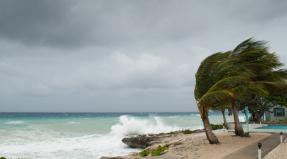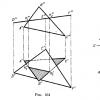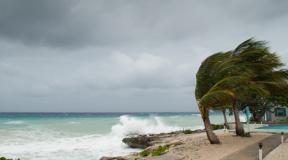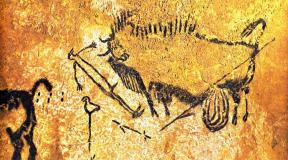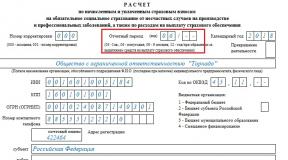Learn military science, we'll come and check it out. Voronezh combat veteran Valery Druzhinin: “The Georgian special forces were hiding from ours in refrigerators and bags of flour. Georgia is a NATO member
"SIX-DAY WAR" between Georgia and Russia
In July 2007, Saakashvili decided to once again increase his presence in Iraq. The Georgian contingent was expanded from 800 to 2000 people.
The Iraq campaign was seen by Tbilisi as a place to prepare its own armed forces and train them by the Americans. However, the older brother was not very happy with the results. Here, for example, is how the fighters of the Georgian contingent in Iraq were described by their comrade, a US Army soldier: “Despite the fact that they are dressed in American uniforms, and some of them are armed with American weapons, they have nothing in common with the US Army. Of all the units I've seen, only the commandos have any discipline. The remaining units have huge problems with discipline. They steal everything they can get their hands on. There was a case where they stole a radio and antenna from an HMMWV. When they asked their commander for clarification, he made innocent eyes. But after they were threatened that they would not receive anything more from the Americans, that same night the radio equipment “materialized” back. At the base in Kuwait, they were constantly caught stealing from other units. They broke open containers and stole rations and uniforms from them. A couple of times they caused fires because they smoked where it was prohibited. They say that, having received help from the United States, the Georgian army is ready to return Ossetia and Abkhazia. Yes, I wouldn’t even trust them to cook minced meat at McDonald’s. The officers are rubbish, there is nothing to say about the sergeants at all. It seems that they are more interested in what they can beg or steal from the Americans... They will need at least 5-10 years to rebuild their army. Until then, they need to be kept as far away from NATO as possible..."
The puppet government of South Ossetia, Dmitry Sanakoev, was located in the convoy of Georgian troops. 39-year-old Ossetian Sanakoev, who once graduated from physics and mathematics, worked in the financial department of the South Ossetian army and in 2000 reached the position of prime minister. He actively advocated reintegration with Tbilisi, and Kokoity, who won the elections in 2001, immediately fired him. Sanakoev felt that he was not appreciated and left for Georgia. There he was assessed, given a salary, and in 2006, during a referendum held in Georgian villages, the dissident Ossetian was “elected” as head of the administration. Now he was waiting for his hometown to be razed to the ground, waiting for shells to demolish the houses of his former classmates and neighbors, in order to declare the liberation of Tskhinvali by the valiant Georgian army.
The Georgian radar station in the Gori region, donated by the Americans, controlled the entire Caucasus. Thanks to its advantage in radar, radio reconnaissance and direction finding, Georgia tracked all cell phones and targeted them with fire. The Americans provided Georgian artillery gunners with superbly prepared topographic maps and high-resolution photographs from space of Tskhinvali and the territory of South Ossetia. American satellites that supported the GPS system were transferred to military mode.
After the occupation of South Ossetia, the Georgian General Staff planned to redeploy the invasion forces within a few days and conduct an operation against Abkhazia, where at that time there were at least 200 thousand tourists. This was not the first time for the Georgian authorities to kill tourists from Russia.
In total, 24 hours were allotted for the operation to capture the Republic of Abkhazia. According to their estimates, it was planned to use up to 300 armored vehicles against the Abkhazians - tanks, armored personnel carriers, infantry fighting vehicles, and up to 200 artillery guns, including rocket artillery.
Sukhum was planned to be captured within the first hour. Sabotage groups and special forces were supposed to destroy the entire leadership, the entire control system, and then powerful air and artillery strikes would be applied, followed by complete displacement.
The Abkhazians came to the conclusion back in March that Georgia would definitely start a war before the fall. In Sukhumi they were ready for it.
This is what Alan Kochiev later recalled: “At first everyone thought it was ordinary shelling. But then we realized that there was a targeted attack. So I ended up in the militia. We were given Kalashnikov assault rifles and four horns for it. After that, we united in groups of 15–20 people around our areas and began to defend them. When the cartridges ran out, we took them from the ammunition of killed Georgian soldiers. Those with ammunition had no problems. In the same way, we managed to obtain body armor and helmets. In general, the first two days were very difficult. Commandos trained by the Americans went into battle. Apparently, they were drugged with some kind of drugs because they behaved too violently and inappropriately.”
Tskhinvali was defended by about 1,000 Ossetians (350 peacekeepers, 200 riot police and militia). Russian peacekeepers were blocked at their posts. Therefore, Georgian troops had an approximately 10-fold advantage in the breakthrough directions.
There was no centralized defense management. He was partially hampered by the actions of Georgian electronic warfare systems, which suppressed the mobile communications of the defenders. We got into the peacekeepers' favor, thinking that they would not be touched. But the location was broken, there were dead. Under some kind of canopy stood a trembling Kulakhmetov (commander of the Russian peacekeepers) with several soldiers. We ran up to him and asked why they didn’t shoot back, to which he replied that they “had no orders.”
The command sent journalists, Ossetian women who came running from neighboring houses and some of the soldiers to a vegetable storehouse, where under the cover of light concrete floors and a small layer of soil it was possible to avoid shrapnel wounds. At the height of the day, one journalist imprudently decided to contact the editorial office by mobile phone, and the storage facility was hit by artillery strikes. By luck, there were no direct hits and it was not destroyed. Journalist Arkady Babchenko, who came under fire in the Zemo-Nikozi area, wrote: “They have the most powerful means of jamming communications. There is no communication, or they go to our frequencies and give false instructions.” They definitely had mobile phone direction finders, they definitely had mobile phone jammers, and they definitely had... they say it’s called an initiator. When the guys were pinned down - the Vostok battalion, five journalists also came in with them - they turned off their cell phones in the basement. Suddenly the person’s mobile phone turned on, Georgian speech was heard from there, and artillery began to fire directly at this mobile phone. That is, technically the army is superbly equipped.”
Later, Ossetian volunteers told the author that the captured Georgian equipment, modernized in Israel and NATO countries, turned out to be simply unfamiliar to their military specialists. The Ossetians did not even manage to get modernized T-72s, so they were very upset when they captured the Georgian crew. The crew was immediately returned to the tank and, at gunpoint, obediently fired on their own, achieving several successful hits. It is interesting that as soon as the Vostok commander made contact via radio, a shell flew into the house. Moreover, the enemy’s equipment made it possible to direct artillery fire even by a mobile phone signal. Here they managed to capture one of the main trophies of the campaign - American artillery guidance equipment: it looked like an army suitcase the size of a decent chest. And one more thing. The Georgian army was completely unprepared for defense, retreat and rearguard battles, not to mention fighting in encirclement. The retreat from Tskhinvali turned into a disorderly escape. It turned out that the reserve was completely unprepared. The reservists did not know how to handle weapons, and they imagined the war as an occupation promenade. As a result, they ran first, dragging the conscripts with them and bringing disintegration into the personnel units.
“We Ossetians are accused of an asymmetrical response. In 1991, Georgians burned 117 Ossetian villages, together with the inhabitants, and walled people up in chimneys. Now we have burned 13 Georgian villages from which they have been shooting at us all these years. Moreover, there was no one in the villages. We are now told that we responded asymmetrically. Did we really need to burn 117 Georgian villages?” Saakashvili declared the events near Tskhinvali and Gori a victory for the Georgian army: “We are a small country, we have a small army, but we inflicted heavy losses on the Russian army. They tried to destroy us, but they received 400 corpses, 21 destroyed planes, which were shot down by primitive means.” A week later, the number of “destroyed Russian occupiers” in the fantasies of Georgian propagandists will exceed 3,000 people in accordance with legend: “Write more enemy losses. Why feel sorry for him, the adversary?
The most unexpected thing for Georgians and Western countries was the rapid actions of Russian ground forces, which in less than 24 hours entered the territory of South Ossetia with sufficient forces to contain the aggressor. Over the next three days, the Georgian army as an organized force was finished. The Ossetians managed to tie up a 10-fold superior enemy and independently destroy the Georgian strike group that was trying to reach the Zar road. They subsequently drove Georgian forces out of the villages surrounding Tskhinvali, clearing them of the enemy. The Abkhaz captured the Kodori Gorge without losses, effectively using their own small aircraft.
Losses
The official figures for Russian losses were 64 killed and 323 wounded and shell-shocked. Considering that there were several thousand fighters on both sides supported by heavy artillery and tanks, the loss figures are relatively small.
4 aircraft were lost: 3 Su-25 attack aircraft and a Tu-22M3 strategic bomber. Georgians estimate Russian Air Force losses higher: 11–12 aircraft, 2–3 Su-24s, 6–8 Su-25s, 1 Tu-22 and 7–8 helicopters. The Russian Air Force lost no less than seven aircraft during the armed conflict with Georgia.
The Ossetian armed forces lost up to 200 people killed.
According to Russian data, 6 Su-25 attack aircraft, a Mi-24 attack helicopter, a Mi-8 helicopter, 2 unmanned aircraft, 21 T-72 tanks, 22 BMP-1, 1 BTR-80, 2 MT-LB, 2 Cobra armored car, 1 MLRS launcher, 9 guns, 3 mortars, 10 trucks, 5 Landrover all-terrain vehicles, 3 Dodge pickups, 1 M.1025A2 Hummer. The entire Georgian fleet was liquidated.
There is another opinion about the losses, expressed by a Georgian officer in an online diary: “Military: 500–700 killed, mainly the 4th brigade (for unknown reasons, a brigade armed with an M4 was killed), which had the most murderous effect, because there was a select brigade and many comrades served there, many lost their closest friends... at the same time, everything happened in front of everyone, everyone saw how a cluster bomb fell right in the middle of the road from Gori to Tskhinvali, everyone was screaming on the radio...
And about 1000 wounded of varying degrees of severity. In my opinion, together with the reservists. To be honest, I don’t know much about reservists at all. I don’t know who fought where, nor who lost how much, nor how many wounded, I know what everyone knows - that they were stupidly thrown into battle, that half ran around Gori looking lost, the other half were sent to slaughter in the thick of it, I know that they got into a fight among themselves, I know that they fled, throwing away their weapons, and the officers overtook them, in short, everything that everyone knows.
Civilian casualties: 100–150 killed, 500–1000 wounded.
The Americans were especially upset by the loss of several armored Hummers loaded with special equipment in the Poti area. It was so upsetting that they officially even demanded that the cars be returned. Special forces seized Israeli installations in southern Georgia and took possession of several Israeli unmanned aircraft. High-end electronic intelligence equipment was also seized, including top-secret equipment used to monitor Iran and Syria.
But the Ossetian war allowed pro-American politicians in Russia to open a new front of struggle not only against our country, but also against supporters of peaceful relations with Russia in other countries.
Kasparov, posted a huge article entitled “Obama must confront the Russian regime.” It seemed necessary to him to explain on the pages of the American press what kind of foreign policy the United States should pursue. Of course, as soon as the invasion of Ossetia by Georgian troops began, citizens who considered it completely democratic to bomb someone in the interests of the Atlantic Alliance quickly became very excited, somewhere even a hysterical state. In a short time, a document appeared condemning Russia’s position, signed by the next organizing committee for the next congress of “democratic forces.” It was signed by N. Belykh (SPS), G. Kasparov (UGF), O. Kozlovsky (Defense movement), B. Nemtsov (in the document he called himself a “politician”), M. Reznik and I. Ermolenko (St. Petersburg and Samara “Yabloko”, respectively), L. Ponomarev (“For Human Rights”) and several other people, whose names are little known even to the politicized Russian public. “Echo of Moscow” in the correspondent’s own speech generally called the Russian troops “enemy”. Condoleezza Rice, having familiarized herself with the reaction of Russian “democrats” to the events in the Caucasus, said: “We will continue to sponsor Russian democratic reformers who want to visit America.
George Bush: “Michael! You insisted that there was oil in South Ossetia!”
Saakashvili, slowly starting to chew his tie: “I swear I was my mother...”
NAUMETS Alexey Colonel, commander of the 247th Guards Air Assault Regiment of the 7th Guards. dshd. In August 2008, he took part in the operation “to force Georgia to peace”:
At dawn on August 12, we began to march across Georgian territory to the village of Khaishi. The task is to close the Kodori Gorge from Tbilisi. The test was not easy: we had to follow serpentine roads and go through 6 tunnels. At the same time, the formation of the marching order was such that when moving along mountain roads, the column was ready to engage in battle with the enemy at any moment.
Walking at the head of the column, I looked out and informed the artillery chief of the places where the artillery battery could deploy, so that in case of an attack by the Georgians, we could be supported with fire. After all, army aviation did not participate in our cover, and in the gorge, as we were oriented, there were up to 2.5 thousand Georgians. Therefore, they walked in readiness for battle and at any moment several guns were on duty at some section of the route, which then caught up with the column. At the same time, there is no riding on armor - everyone is in the landing force, ready for battle.
An explosion was ruled out: sappers were checking the road, and a constantly running noise generator would not have allowed the radio-controlled landmine to be put into operation. Moreover, the road is asphalted - you can’t place a landmine.
13 in the morning, when the Georgians came to their senses, the gorge was already blocked. And they, throwing down their weapons and changing into clothes apparently confiscated from the local population, ran. Whoever, for example, never imagined that a Zhiguli could accommodate eight people - but they were driving! Then UN officers appeared and began to take out the civilian population. It was not difficult to guess what kind of “population” this was. For example, a family is driving a UN car, and in it are ten men, 25-30 years old, with short hair, and wearing high-top army boots peeking out from under their civilian trousers.
Well, the strongest impression that remained after those events was the captured Buks, which, despite the fact that they were carefully hidden, we found at their air base in Senaki. Having plowed up the runway of this air base with explosives, they blew up two combat helicopters and an attack aircraft abandoned by the Georgians. But the radar used not only for military purposes, but also for civilian purposes, was not touched. Moreover, so that Saakashvili would not later claim that the Russians had broken him, they left two Georgian specialists in the control room.
By the way, as soon as they turned off this radar used in the interests of the Georgian air defense, people from Tbilisi immediately screamed on the phone: who turned off the radar there, on what grounds? Taking the phone from a Georgian specialist, one of our soldiers answered a question from Tbilisi: “The radar was turned off by Private Svidrigailo. Russian airborne troops. Claims should be sent to the Minister of Foreign Affairs of the Russian Federation, Sergei Lavrov.”
Well, as trophies I brought from that war a plastic sign from the headquarters of the 2nd motorized infantry brigade and certificates of honor from one of their officers. From the Ukrainian ambassador to Iraq and the governor of the US state of Kansas. Both are for success in combat training.
"APPROVED"
Commander-in-Chief M. Saakashvili
Tactics of the main types of combat operations of the Georgian army.
1. Offensive
An offensive is a forced type of military action. The attack is carried out in the summer, when it is not hot, and also in the fall after the grapes are harvested. It is undertaken only under the condition of at least 10-fold superiority over enemy forces. It is conducted primarily through the ruins left after shelling enemy positions from heavy artillery and MLRS (multiple launch rocket systems). During the offensive, Ukrainian tanks move ahead. The enemy usually takes them for his own and does not shoot right away. The main method of movement on the battlefield during an offensive for an infantryman is on tiptoe. This achieves the ability to instantly turn in the desired direction and even make a complete 180-degree turn to transition to the main type of combat operations - retreat. In addition to tiptoeing, the following options are also used:
- one step to the left, one step to the right, one step forward and two steps back;
- one step forward, two steps back.
During the offensive, the personnel are provided with a triple standard of complex nutrition: shish kebab, khachapuri, satsivi and lobio. Kindzmarauli and Borjomi are recommended as drinks. After the lunch meal, you are required to sleep for at least 2 hours in a dark, cool place, protected from shelling, under the protection of American instructors. They still don’t sleep day or night, they want to control everything, everywhere.
If during the offensive of our army the enemy fires, all infantrymen are issued two spare army pants and 1 (one) ammo set of diapers in accordance with Directive 19373827642 of the General Staff of the Georgian Army.
When advancing, Georgian battle songs such as “Akishi”, “Shari-Shuri”, “Chaguna” and “Hello, Birds” are performed.
2. Defense
Defense is the favorite type of combat of our army. Defense is carried out at any time of the year, except for the Christmas holidays. During the defense, there must be sufficient numbers of UN observers between our troops and enemy forces (that is, at least 2 observers for each enemy soldier).
There are 3 main defense options:
The first one is called “Danger, genatsvale.” With it, the principle is implemented - we sit in holes and do not stick out.
The second option is “Well, so-so, genatsvale.” The principle is implemented - we sit in holes, but stick out if there is a smell of fried food (kebab-mashlyk, lula-kebab).
The third option is “Relaxation, genatsvale.” With this option, quickly sticking out of holes in different places and at different times is often practiced in order to exhaust enemy observers (the gopher principle).
During the defense, personnel are provided with a single standard of complex nutrition, but in an expanded assortment: shish kebab, khachapuri, satsivi, lobio, chakhokhbili, tkemali, flatbreads, greens. For drinks, a list of wines is recommended in accordance with Directive 0792809872 of the General Staff. After every second meal, sleep is required for at least 2 hours in a dark, cool place, protected from shelling, under the protection of American instructors.
During the defense, songs such as “Elesa”, “Suliko”, “Perkhuli”, “Hasanbegura”, “Piruz Pandura” and others are performed.
3. Retreat
Retreat is the main type of combat operations of our army. The retreat takes place at any time of the year. The following withdrawal options are available:
A) gradual rewinding - those who first come into contact with the enemy retreat first, followed by the rest, in the order determined by the commanders;
b) planned withdrawal - all types of troops retreat simultaneously, preserving equipment and weapons;
C) general drop - everyone retreats as quickly as possible, throwing away everything unnecessary;
d) save yourself, who can - everyone retreats as quickly as possible, abandoning absolutely everything, and those who no longer have time begin to fry barbecue in order to meet the advancing enemy troops in a timely manner and surrender with dignity, preserving skewers and barbecues.
Retreat directions are indicated by commanders who retreat ahead of their troops.
During a retreat, personnel are not provided with food; all food is left on the roadsides in an appetizing form in order to distract the advancing enemy and gain time. Sleep is also not allowed. As a surprise, you can leave associated American instructors next to the products; enemy troops are very well distracted by them.
Special instructions:
If the enemy continues the pursuit long enough, without being distracted by pre-prepared picnic areas with ready-made barbecue, wine, and even associated American instructors, our army servicemen change into peasant clothes in specially designated areas and begin to hill the vineyards. Those who retreated towards the seaside change into swimsuits and pretend to be Armenians sunbathing on the beach. As a last resort, you need to grab sun loungers on the beaches and sail west, towards the USA. Those who swim there need to find a frigid black woman with raised eyebrows named Condoleezza, and climb under her skirt. This is the safest place in the world for the Georgian military.
Special instructions (written by hand at the end of the document):
During the retreat, no one, I emphasize - no one, not even the Minister of Defense, overtakes me, your commander in chief.
And I forbid, you hear, I forbid calling me Stsukoshvili!!!
P.S:
The inscription on the fence in the Georgian city of Gori: “Comrade Georgians! Learn military affairs the real way!!! We’ll come and check it out.
Signature: 71st GV SME
Not only the name is funny, but also the scale: three thousand fighters. From 13 alliance countries. A battalion, it turns out, from each. A sort of chicken coop.
A transparent defense alliance - this is how NATO positions itself by posting information about the exercises on its website. It is clear that he is transparent: he does not hide his good intentions. He announced, for example, that he intended to tear Kosovo away from the Serbian homeland, and he did. Questions about defensiveness.
Can anyone tell me which defensive war NATO was involved in? Whom and from whom did he protect, courageously shooting back?
And what is he doing, strictly speaking, in Georgia? Which, firstly, is not a member of NATO. Secondly, it is an Asian country - both in geography and in mentality. And thirdly, from whom does she want to defend herself? From Abkhazia? From South Ossetia? So in Tiflis they are considered temporarily seized territories of their own country. Showdowns between provinces - is it defense or transparency for NATO?
Yes, there is also Russia. According to Georgian legend, she has a grudge against Georgia. He can’t even eat, he wants to take over Georgia. But here, again, there is something to consider.
Firstly, Russia, in fact, created present-day Georgia within its current borders. Sometimes by affection, and sometimes by dragging them to themselves and then uniting them into their own province under a dozen completely different territories, taking them away from Turkey and Persia. The taking away was moral, wasn’t it? These were big boys’ games, to which Georgia had nothing to do. However, it did not exist then. It was created by the Bolsheviks in 1920.
Secondly, Russia does not need to seize Georgia at all. Why does it need a problem region with a population that needs to be fed at the expense of other regions, as was the case in the Soviet Union? It is, of course, fun to laugh at jokes like “this is not chimadan - this is zhi kashilek.” But when you look at the table with economic calculations, where you can see that the Georgian SSR consumed ten times more from the union budget than it gave into it, the smile immediately becomes crooked. And if you remember how the Russian so-called “Non-Black Earth Region” lived then, the crooked smile becomes bitter.
Because the RSFSR contributed almost twice as much to the union budget as it consumed. Finally, thirdly, what should we do there, seize Georgia?
In 2008, the Russian army, which was then in a state of discord and decline, lacking modern weapons, the latest reconnaissance equipment, and reliable air defense, destroyed the Georgian army in three days. But she was already nurtured, trained and trained by NATO instructors. It didn't help. A photograph went around the whole world of one Russian fighter, Yakut in appearance or Tuvan, with a Kalashnikov machine gun in his hands stopping an entire Georgian column. Leaving her whole, yes. Because the formidable Georgian warriors did not dare to step over the Russian warrior.

South Ossetia. 2008 Photo: www.globallookpress.com
And what about the cases of panicky flight of Georgians, when Chechen negotiations between the fighters of the Vostok battalion were specifically inserted into their communication? And this mocking inscription on the fence - “Comrade Georgians, learn military affairs the real way!”?
With any further aggression against Russia and its interests in the Caucasus, Georgian soldiers will simply be driven away with rags. Guess which ones.
Is Georgia a member of NATO?
Generally speaking, this is the fourth time that the “Worthy Partner” exercise has been held. The Americans started them first. Then the British joined them. Infinitely peace-loving people are eager to guard the world somewhere far from their borders.
Last year, eight NATO countries from those considered partners of the bloc were already involved in the exercises. It’s funny, but Türkiye, Azerbaijan and Armenia are aiming to strengthen Georgia’s defense. Ukraine brings a few tears out of observers.
By the way, yes, the enemy did not get through. He vilely tried to carry out an amphibious landing on a section of the Azov Sea coast, but Ukrainian tanks sternly showed the aggressor his place.

The aggressor, however, did not notice the cruel rebuke. Apparently for the reason that the tanks did not fire at him. Because he himself was just an icon on the map. And in real Azov, Russian ships completely reign and discourage sea carriers from any desire to enter the ports of Berdyansk and Mariupol another time. Such a slight revenge for the lawless capture of the Russian ship "Nord". Demonstration of who exactly outlines the limits of lawlessness. Especially for the restless but narrow-minded separatists who temporarily occupied the territories of the Russian Empire.
Yes, a little more on the topic of the five-day war with Georgia, when Russia, only for greater political reasons, did not go to Tbilisi and hide all the ties of the Georgian president. Just after the previous maneuvers in Georgia, it turned out that tanks and armored vehicles returned from there to Germany for as long as... four months! And even during this period, only close cooperation between NATO allies helped.
When, for example, in Hungary they discovered that the equipment was secured in the carriages in the Romanian way, and not as required by the Hungarian regulations, only friendly allied mutual assistance helped to unload and load the combat vehicles again. Friendship also helps the allies in the Baltic states, where the railway gauge remains imperial and does not coincide with the European one. There are also many tear-jerking examples of touching cooperation, when equipment has to be unloaded and then loaded again onto new platforms.

NATO exercises in Georgia. Photo: www.globallookpress.com
No wonder NATO has planned as many as 180 maneuvers for this year. Four months to transport tanks, but in conditions of war with Russia - no, here you have to study and study more. Otherwise, it will turn out like it did then: in three days Russia will defeat the enemy, and then for another two days it will grin widely and write mocking inscriptions on the fences. After which the war will end, and the Hungarians and Romanians will still exchange allied handshakes when unloading tanks...
#2 Anonīms 04.10.2009 09:27
It’s a pitiful spectacle - the armed forces of one eighth of the landmass, with a huge superiority in manpower, tanks and aircraft, are so proud of their “victory” over a small country!
DISGRACE!
#3 Anonīms 04.10.2009 11:16
The Russian troops did not have a numerical advantage. It’s just that Georgians are cowardly jackals who can only shell peaceful cities and talk about their “bravery” on camera. And there is no pride behind the Georgian regime, but no one wants to fight for a lie.
It’s a pity that our guys from Vostok were not allowed to catch Saakashvili and put him in a cage. Because he’s forgotten our lessons lately.
#4 Anonīms 04.10.2009 12:01
Yessss, Georgians have disgraced themselves to the whole world. And their president Saakashvili is an ordinary cowardly liar, a war criminal. It was in vain that the Georgians were and are supported so much by the United States; now they too have another stigma of dishonesty.
#6 Anonīms 04.10.2009 13:57
Georgians are ordinary puppets of the Americans, which means they know how to fight like puppets (only when they are supported by the puppeteer’s strings).
The Georgians themselves are very cowardly in business, but they shine with verbiage, this ability blah blah blah cannot be taken away from them.
#7 Anonīms 04.10.2009 18:29
Saakashvili has long gone beyond all bounds of decency, reaching the point where he started killing, hoping for the protection of the United States.
A nasty and disgusting liar whose words are worth NOTHING. I think that fair retribution awaits him from the people of the Caucasus.
#8 Anonīms 04.10.2009 21:10
Dostoevsky is listening to you, he’s probably proud of what Russia has come to, do you even believe what you’re saying, think about it, two Lilliputians have all of Russia yeah.............
#9 Anonīms 04.10.2009 21:12
I am not a political scientist or an analyst, so I will be brief. I feel sorry for the people of Russia, but to be honest, not all of them. That part of it - which has to consider themselves citizens of their state during the times of Medvedev and Putin. For for the first time - despite many years of attempts to conceal, deceive, deceive, slander, misinform - their rulers are called by their proper names. Firstly, they are criminals, and on an international scale. Because they violated more than one provision of international law, they violated them for years - preparing the biggest provocation that led to even greater lawlessness - the recognition of the independence of two Georgian regions. They violated it by illegal, criminal passporting of the population of a neighboring state. They violated the purposeful, anti-Georgian mission of their “peacekeeping” contingent. They violated the preparation of bandit armed forces of separatists. They violated them systematically by arming them. Secondly, they are LIARS, in the best traditions of the enemy of the human race, Satan. The commission did not identify a single fact indicating the implementation of genocide by the Georgians in relation to the peaceful Ossetian population. Thirdly, they are bloodsuckers, misanthropes and Georgian-phobes, ideological inspirers of ethnic punitive cleansing of Georgian villages from everything Georgian: from Georgian lives, from Georgian graves, from Georgian churches, from Georgian houses, from Georgian living creatures. Medvedev and Putin are international Criminals, Liars, Nazis and Bloodsuckers. Who does the President of Georgia look like, according to the findings of the same commission? The head of state, the commander-in-chief of the country's armed forces - who, in the midst of ongoing military provocations and direct incitement, covered by the deliberate inaction of the so-called. peacekeeping contingent - gave the order to suppress the firing points of the bandits and their protectors, without resorting to Norwegian restraint and Finnish composure, which is obvious and is blamed on him by the European members of the commission. And he doesn’t regret his decision one bit - as he said a week earlier. For his hands are clean from the blood of civilians, and his feet are not stained with the ash of scorched villages. He was just trying to protect the lives of the Georgian population from the total military provocations of bandits. He simply didn't calculate their number. There turned out to be several tens of millions of them, in the person of a ruthless northern monster, fueled by the roar of the majority of its population: “Crucify her!” - in relation to Georgia, the Lot of the Mother of God. Only for the fact that Georgian soldiers, at the cost of their lives, were not involved in the shedding of the blood of the peaceful Ossetian population, in their heroic attempts to save the Georgian population from criminals against humanity - I express my gratitude to the President of Georgia. He managed to raise a Soldier in our country, and not a punisher and looter. I am grateful to him for the fact that the commission was unable to confirm another reason given by Russia, that the Georgian side attacked the “peacekeepers,” and that in fact, the absolutely opposite fact took place: on the morning of August 7, the Georgian peacekeepers were attacked and destroyed. The attack began before Russian blue berets joined the fighting. I promised to be brief, and here I will complete my assessment of the long-awaited conclusions of this commission. I offer my condolences to all the civilized, democratic and progressive forces of Russia, to all my many Russian friends and girlfriends, for the fact that the whole world has learned the truth about their rulers. That their state is ruled by Criminals and Bandits. Because the veil was torn from them. And only for THIS - apparently our soldiers were worth laying down their lives in an unequal struggle with the most misanthropic regime of the 21st century. May their memory be blessed for this!
From the news: M. Saakashvili lost the parliamentary elections and must leave...
The author feels a sense of deep respect directly for the wonderful Georgian people, bypassing their young democratic president Mikheil Saakashvili. The only goal pursued by the author is to establish where Saakashvili’s guard went on the second or third days of the war in August 2008, after it snipered night Tskhinvali with heavy artillery and heroically shot at the flow of Ossetian refugees on the Tskhinvali-Java road. And don’t ask where the author got this document. By handing over the original source, his memory was erased.
TOP SECRET
THAT IS, ABSOLUTELY-TOTALLY-SUPER SECRET EVERYTHING YOU READ IS EATEN AS YOU READ IT
"APPROVED"
Commander-in-Chief M. Saakashvili
Tactics of the main types of combat operations of the Georgian army.
1. Offensive
An offensive is a forced type of military action. The attack is carried out in the summer, when it is not hot, and also in the fall after the grapes are harvested. It is undertaken only under the condition of at least 10-fold superiority over enemy forces. It is conducted primarily through the ruins left after shelling enemy positions from heavy artillery and MLRS (multiple launch rocket systems). During the offensive, Ukrainian tanks move ahead. The enemy usually takes them for his own and does not shoot right away. The main method of movement on the battlefield during an offensive for an infantryman is on tiptoe. This achieves the ability to instantly turn in the desired direction and even make a complete 180-degree turn to transition to the main type of combat operations - retreat. In addition to tiptoeing, the following options are also used:
- one step to the left, one step to the right, one step forward and two steps back;
- one step forward, two steps back.

Tskhinvali will be ours!
During the offensive, the personnel are provided with a triple standard of complex nutrition: shish kebab, khachapuri, satsivi and lobio. Kindzmarauli and Borjomi are recommended as drinks. After the lunch meal, you are required to sleep for at least 2 hours in a dark, cool place, protected from shelling, under the protection of American instructors. They still don’t sleep day or night, they want to control everything, everywhere.
If during the offensive of our army the enemy fires, all infantrymen are issued two spare army pants and 1 (one) ammo set of diapers in accordance with Directive 19373827642 of the General Staff of the Georgian Army.
When advancing, Georgian battle songs such as “Akishi”, “Shari-Shuri”, “Chaguna” and “Hello, Birds” are performed.
2. Defense
Defense is the favorite type of combat of our army. Defense is carried out at any time of the year, except for the Christmas holidays. During the defense, there must be sufficient numbers of UN observers between our troops and enemy forces (that is, at least 2 observers for each enemy soldier).
There are 3 main defense options:
The first one is called “Danger, genatsvale.” With it, the principle is implemented - we sit in holes and do not stick out.
The second option is “Well, so-so, genatsvale.” The principle is implemented - we sit in holes, but stick out if there is a smell of fried food (kebab-mashlyk, lula-kebab).
The third option is “Relaxation, genatsvale.” With this option, quickly sticking out of holes in different places and at different times is often practiced in order to exhaust enemy observers (the gopher principle).
During the defense, personnel are provided with a single standard of complex nutrition, but in an expanded assortment: shish kebab, khachapuri, satsivi, lobio, chakhokhbili, tkemali, flatbreads, greens. For drinks, a list of wines is recommended in accordance with Directive 0792809872 of the General Staff. After every second meal, sleep is required for at least 2 hours in a dark, cool place, protected from shelling, under the protection of American instructors.
During the defense, songs such as “Elesa”, “Suliko”, “Perkhuli”, “Hasanbegura”, “Piruz Pandura” and others are performed.
3. Retreat
Retreat is the main type of combat operations of our army. The retreat takes place at any time of the year. The following withdrawal options are available:
A) gradual rewinding - those who first come into contact with the enemy retreat first, followed by the rest, in the order determined by the commanders;

Step-by-step rewinding
b) planned withdrawal - all types of troops retreat simultaneously, preserving equipment and weapons;
C) general drop - everyone retreats as quickly as possible, throwing away everything unnecessary;

General drape
d) save yourself, who can - everyone retreats as quickly as possible, abandoning absolutely everything, and those who no longer have time begin to fry barbecue in order to meet the advancing enemy troops in a timely manner and surrender with dignity, preserving skewers and barbecues.
Retreat directions are indicated by commanders who retreat ahead of their troops.
During a retreat, personnel are not provided with food; all food is left on the roadsides in an appetizing form in order to distract the advancing enemy and gain time. Sleep is also not allowed. As a surprise, you can leave associated American instructors next to the products; enemy troops are very well distracted by them.
Special instructions:
If the enemy continues the pursuit long enough, without being distracted by pre-prepared picnic areas with ready-made barbecue, wine, and even associated American instructors, our army servicemen change into peasant clothes in specially designated areas and begin to hill the vineyards. Those who retreated towards the seaside change into swimsuits and pretend to be Armenians sunbathing on the beach. As a last resort, you need to grab sun loungers on the beaches and sail west, towards the USA. Those who swim there need to find a frigid black woman with raised eyebrows named Condoleezza, and climb under her skirt. This is the safest place in the world for the Georgian military.
Special instructions (written by hand at the end of the document):
During the retreat, no one, I emphasize - no one, not even the Minister of Defense, overtakes me, your commander in chief.

And I forbid, you hear, I forbid calling me Stsukoshvili!!!
P.S:
The inscription on the fence in the Georgian city of Gori: “Comrade Georgians! Learn military affairs the real way!!! We’ll come and check it out.
Signature: 71st SME (Russian Army).
Read also...
- What are the reasons for the successful military campaigns of the Mongols?
- Intersection of two planes
- Why do you dream of white doves: for the fulfillment of desires, meeting true love Seeing white doves in a dream
- I dreamed of a white dove - interpretation of the dream according to the dream book. What does it mean when you dream of a white dove
